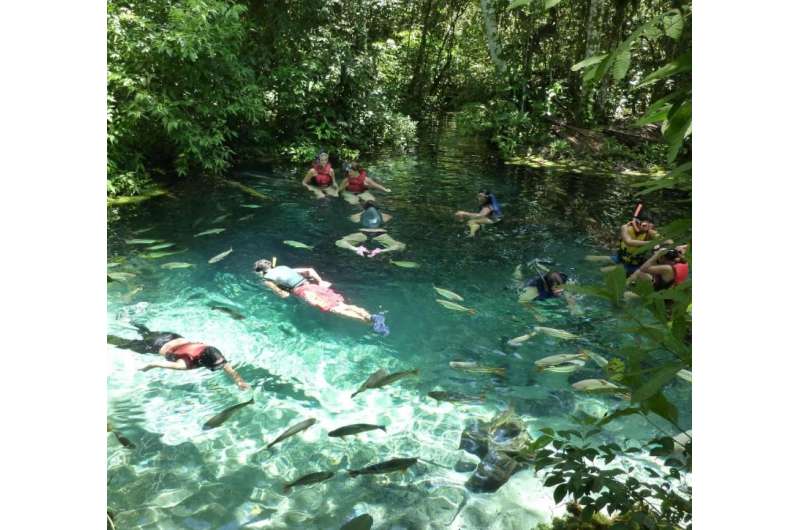Is the eco-tourism boom putting wildlife in a new kind of danger?

Many tourists today are drawn to the idea of vacationing in far-flung places around the globe where their dollars can make a positive impact on local people and local wildlife. But researchers writing in Trends in Ecology & Evolution on October 9th say that all of those interactions between wild animals and friendly ecotourists eager to snap their pictures may inadvertently put animals at greater risk of being eaten.
It's clear that the ecotourism business is booming. "Recent data showed that protected areas around the globe receive 8 billion visitors per year; that's like each human on Earth visited a protected area once a year, and then some!" said Daniel Blumstein of the University of California, Los Angeles. "This massive amount of nature-based and eco-tourism can be added to the long list of drivers of human-induced rapid environmental change."
Blumstein says the new report sets out "a new way of thinking about possible long-term effects of nature-based tourism and encourages scientists and reserve managers to take into account these deleterious impacts to assess the sustainability of a type of tourism, which typically aims to enhance, not deplete, biodiversity."
The basic premise of the report is this—human presence changes the way animals act and those changes might spill over into other parts of their lives. Those changes in behavior and activity may put animals at risk in ways that aren't immediately obvious.
"When animals interact in 'benign' ways with humans, they may let down their guard," Blumstein said. As animals get used to feeling comfortable with humans nearby, they may become bolder in other situations, he says. "If this boldness transfers to real predators, then they will suffer higher mortality when they encounter real predators."
Eco-tourism is in some respects similar in this regard to domestication or urbanization. In all three cases, regular interactions between people and animals may lead to habituation—a kind of taming. Evidence has shown that domesticated silver foxes become more docile and less fearful; a process that results from evolutionary changes but also from regular interactions with humans. Domesticated fish are less responsive to simulated predatory attacks. Fox squirrels and birds that live in urbanized areas are bolder. It takes more to make them flee.
The presence of humans can also discourage natural predators, creating a kind of safe haven for smaller animals that might make them bolder, too. When humans are around, for example, vervet monkeys have fewer run-ins with predatory leopards. In Grand Teton National Park, elk and pronghorn in areas with more tourists spend less time at alert and more time feeding.
The question is to what extent do these more relaxed and bolder behaviors around humans transfer to other situations, leaving animals at greater risk in the presence of their natural predators? And what happens if a poacher comes around?
"We know that humans are able to drive rapid phenotypic change in other species," the researchers write. "If individuals selectively habituate to humans—particularly tourists—and if invasive tourism practices enhance this habituation, we might be selecting for or creating traits or syndromes that have unintended consequences, such as increased predation risk. Even a small human-induced perturbation could affect the behavior or population biology of a species and influence the species' function in its community."
Blumstein says they hope to stimulate more research on the interactions of humans with wildlife. It will "now be essential to develop a more comprehensive understanding of how different species and species in different situations respond to human visitation and under what precise conditions human exposure might put them at risk," he says.
More information: Geffroy et al.: "How Nature-Based Tourism Might Increase Prey Vulnerability to Predators, " Trends in Ecology & Evolution, (2015). DOI: 10.1016/j.tree.2015.09.010
Provided by Cell Press

















